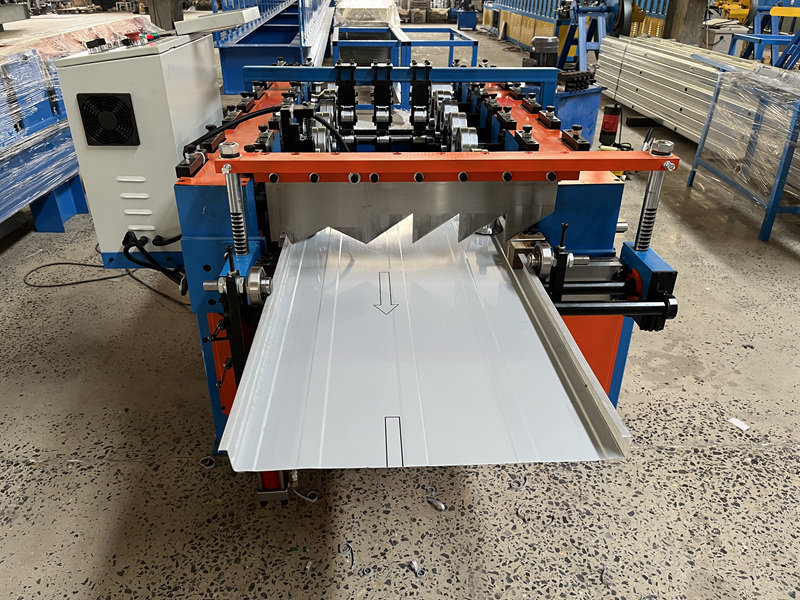metal wall panel roll forming machine
Understanding Metal Wall Panel Roll Forming Machines
In today's construction industry, the demand for efficient and versatile materials has led to the rise of metal wall panel roll forming machines. These machines play a crucial role in manufacturing wall panels for commercial and residential buildings, creating durable, aesthetically pleasing structures while optimizing production processes. This article delves into the significance of roll forming technology, its benefits, and the operational aspects of metal wall panel roll forming machines.
What is Roll Forming?
Roll forming is a continuous bending operation in which a long strip of metal is passed through sets of rolls that progressively shape it into desired profiles. This method is particularly advantageous for producing long lengths of uniform cross-sections, such as metal wall panels, without the need for excessive post-processing. The precision and efficiency that roll forming provides make it an ideal choice for manufacturers looking to produce high-quality metal components.
Benefits of Metal Wall Panels
Metal wall panels offer numerous advantages over traditional building materials. They are lightweight, resistant to rot, and require minimal maintenance, which makes them a suitable option for various construction projects. Additionally, metal panels can be designed in a variety of finishes and colors, enhancing the visual appeal of any structure. With growing environmental concerns, using metal panels can also be more sustainable, as they are often made from recyclable materials.
Role of Roll Forming Machines
Metal wall panel roll forming machines are designed to provide accurate and consistent shaping of metal sheets into specific profiles
. These machines utilize a series of rollers, each designed to progressively shape the metal as it passes through. The result is a seamless, continuous panel that can be easily installed, reducing labor costs and time on-site.metal wall panel roll forming machine

Features of Modern Roll Forming Machines
Modern roll forming machines are equipped with advanced technology to enhance efficiency and production capabilities. Key features often include
1. Automated Controls Many machines come with computerized controls that allow for easy adjustments and monitoring of parameters such as speed, thickness, and panel length.
2. High-Speed Production With the capability to produce panels at high speeds, these machines significantly reduce turnaround times for projects.
3. Variable Profiles Manufacturers can alter the machine settings to produce different panel designs, accommodating a wide range of client requirements.
4. Durability and Maintenance Built from robust materials, roll forming machines are designed to withstand high volumes of production while requiring minimal maintenance.
Conclusion
The evolution of metal wall panel roll forming machines marks a significant advancement in the construction industry. By leveraging this technology, manufacturers can efficiently produce high-quality metal wall panels that are not only visually appealing but also functional and sustainable. As the demand for innovative building materials continues to rise, the role of roll forming technology will undoubtedly become more prominent, shaping the future of construction. Investing in modern roll forming machines is essential for those looking to remain competitive in the ever-evolving market, ensuring that they can meet the demands of tomorrow’s construction projects with efficiency and quality.
-
Roof Panel Machines: Buying Guide, Types, and PricingNewsJul.04, 2025
-
Purlin Machines: Types, Features, and Pricing GuideNewsJul.04, 2025
-
Metal Embossing Machines: Types, Applications, and Buying GuideNewsJul.04, 2025
-
Gutter Machines: Features, Types, and Cost BreakdownNewsJul.04, 2025
-
Cut to Length Line: Overview, Equipment, and Buying GuideNewsJul.04, 2025
-
Auto Stacker: Features, Applications, and Cost BreakdownNewsJul.04, 2025
-
Top Drywall Profile Machine Models for SaleNewsJun.05, 2025








